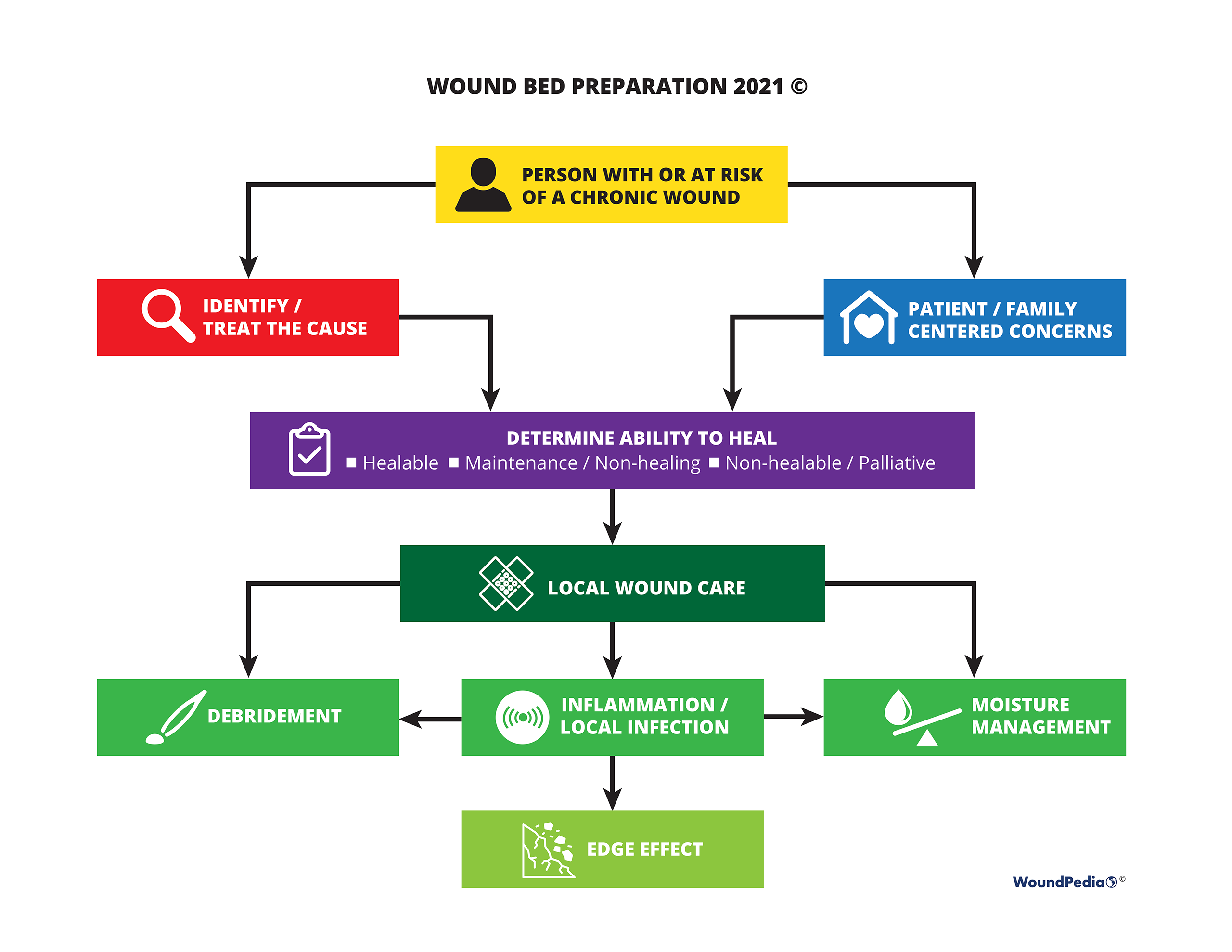Chapter 8: Venous Leg Ulcers
Venous Leg Ulcers
Authors:
- Dr. Robyn Evans BSc MD CCFP FCFP
- Cathy Burrows RN, BScN, MScCH (Wound Prevention & Care)
Learning Objectives
- Review wound management strategies for patients with venous leg ulcers
- Identify patient venous leg ulcer concerns
- Assess appropriate treatment and management options for venous leg ulcers
Introduction
Venous leg ulcers (VLUs) are the most severe manifestation of chronic venous disease (CVD). Due to their chronic nature, high recurrence rate, and slow healing time, VLUs account for 80% of all leg ulcers seen in patients with CVD (Nicolaides, 2020). VLUs impose a heavy socioeconomic burden on patients’ quality of life and have a major impact to the healthcare system due to the cost and duration of care.
This chapter will discuss the diagnosis, treatment and management of VLU’s using Wounds Canada Best Practice Recommendations for the Treatment and Management of Venous Leg Ulcers (Evans et al., 2019), Wound Bed Preparation 2021 (Sibbald et al., 2021) and expert opinion.
Venous leg ulcers are chronic with high recurrence rates that pose a challenge for clinician management in the most efficient and cost-effective manner. Accurate diagnosis and treatment involves incorporating the principles of wound bed preparation to address moisture management and bioburden while addressing the cause and patient centred concerns. Further consideration specific to venous disease requires the use of compression therapy along with other medical and surgical options.
The Wound Management Cycle and the Wound Bed Preparation Paradigm (Figure 1) are practical guides to assist clinicians treating and managing VLU’s following a logical and systematic care plan that is customized to meet patient-centred concerns (Evans et al., 2019).
Figure 1: Wound Bed Preparation Paradigm 2021 (Sibbald et al., 2021). Used with permission from WoundPedia


